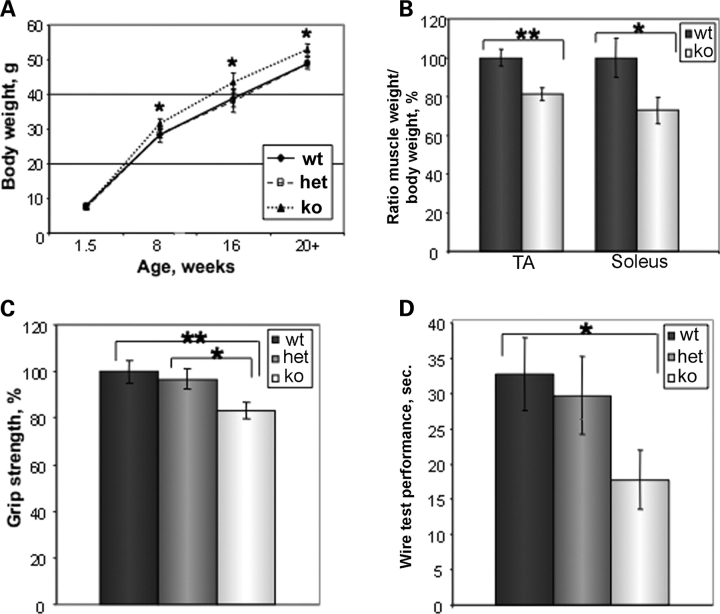Figure 2.
Muscle performance is impaired in T32KO. (A) Comparison of body weight gain in T32KO and WT mice. Average body weight in grams ± SEM was calculated for males of each genotype and plotted as a function of age. Average body weight was ∼10% higher in T32KO after 8 weeks of age, compared with age-matched WT or HET (n = 5–15, *P < 0.05). (B) The ratio of muscle weight to body weight was calculated and expressed as the percent of WT value ± SEM for fast TA and slow (soleus) muscles. T32KO muscle weight normalized to body weight was reduced by 19 and 27% for TA and soleus muscles, respectively (n = 15, **P = 0.002, *P = 0.03). (C) Forelimb grip strength of KO (n = 21), WT (n = 26) and HET (n = 25) animals was measured using grip strength meter and expressed as percent of WT value ± SEM. Age of the tested animals: 5–9 months. Grip strength of T32KO mice was reduced by 17%, compared with WT or HET littermates (**P < 0.01 and *P < 0.05). (D) Wire hang test performance. Latency to fall was compared within genotypes as average time in seconds ± SEM, n = 11–16, age 5–9 months. Latency to fall was 1.8 times less in T32KO animals, compared with WT (*P < 0.05).

